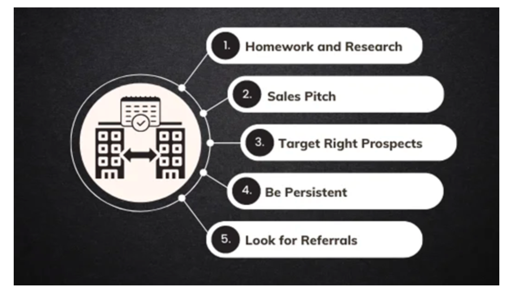Appointment-setting streamlines the B2B lead generation process by assigning specific reps to research and nurture prospects before scheduling appointments. In this guide, we’ll explore the importance of the B2B appointment-setting process, the challenges involved, and the key skills an appointment-setter needs.
What Is B2B Appointment-Setting?
B2B appointment-setting is the process of scheduling an official meeting between a qualified lead and a closing sales rep.
Appointment-setters (also called sales development reps, or SDRs) go through contact lists and conduct research on prospective customers before reaching out to them and pitching the company’s product or service. The SDR then screens prospects based on a list of criteria and starts to build a rapport with them.
Once a lead has been qualified and nurtured, SDRs determine the best time to schedule an appointment. Then they pass the details to closing sales reps, who provide more detailed information and make the final sale.
Why Is an Appointment-Setting Process Important?
Appointment-setting helps sales teams focus their time and effort on buyers who are actually interested. Instead of repeatedly calling leads in the hope of catching them, it’s more efficient to call at an agreed, scheduled time.
Appointment-setting enables you to split lead generation into phases, and it allows for sales specialization: Some reps are best suited to prospecting and appointment-setting, whereas others are skilled at closing. Specialization shortens the sales cycle and increases sales and revenue.
Ultimately, B2B appointment-setting helps you to deliver a better customer experience. It provides an opportunity for sales teams to get to know prospective clients and form lasting relationships, as well as establish brand awareness.
Challenges in B2B Appointment-Setting
Appointment-setting is not an easy task, even for experienced sales reps. Here are some of the hurdles you might encounter.
1. It’s time-consuming
Appointment-setting is an ongoing strategy that requires daily activity. You have to put in a lot of hours (which is why some companies choose to outsource the process). If you don’t keep up that connection with prospects in the sales pipeline, you won’t get results.
2. It can be frustrating
Appointment-setters hear plenty of objections, and it’s all too easy to get demotivated and move on to the next prospect.
Another issue is that without the right research, reps can waste time on talking to the wrong person at an organization—someone who has no decision-making power.
3. It requires smart tools
B2B appointment-setters might contact more than 100 prospects a day on multiple channels, so it’s vital to stay organized. Without the right tools in place, reps won’t be able to keep track of their accounts and conversations. Consider syncing your CRM and outreach tools with something like the Constant Contact Salesforce integration.


